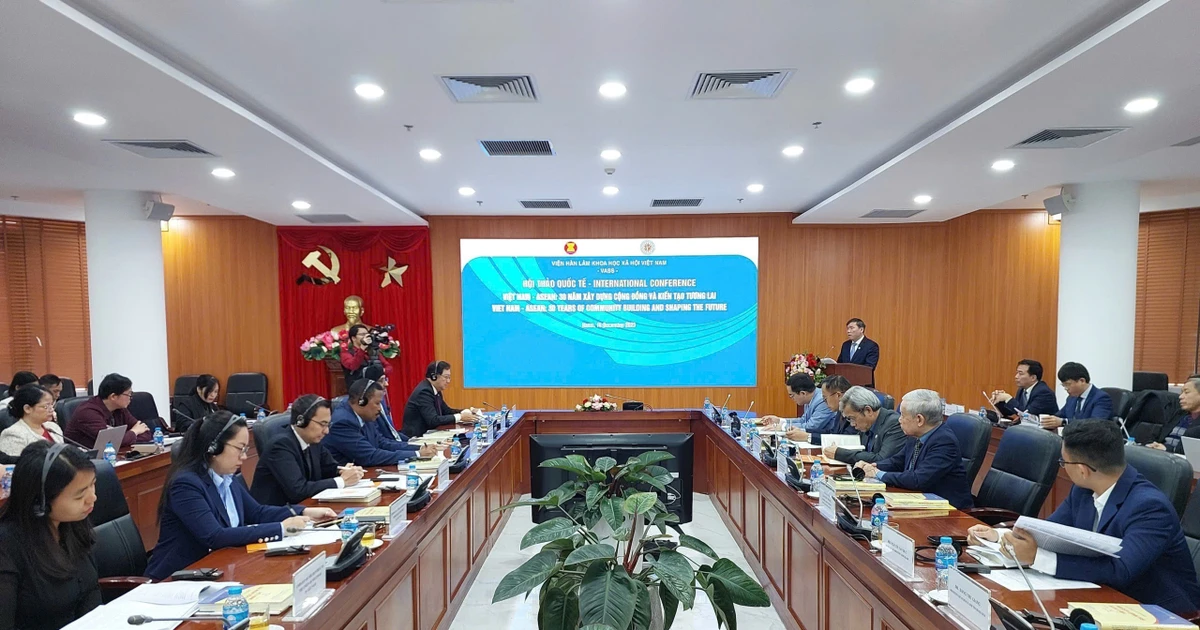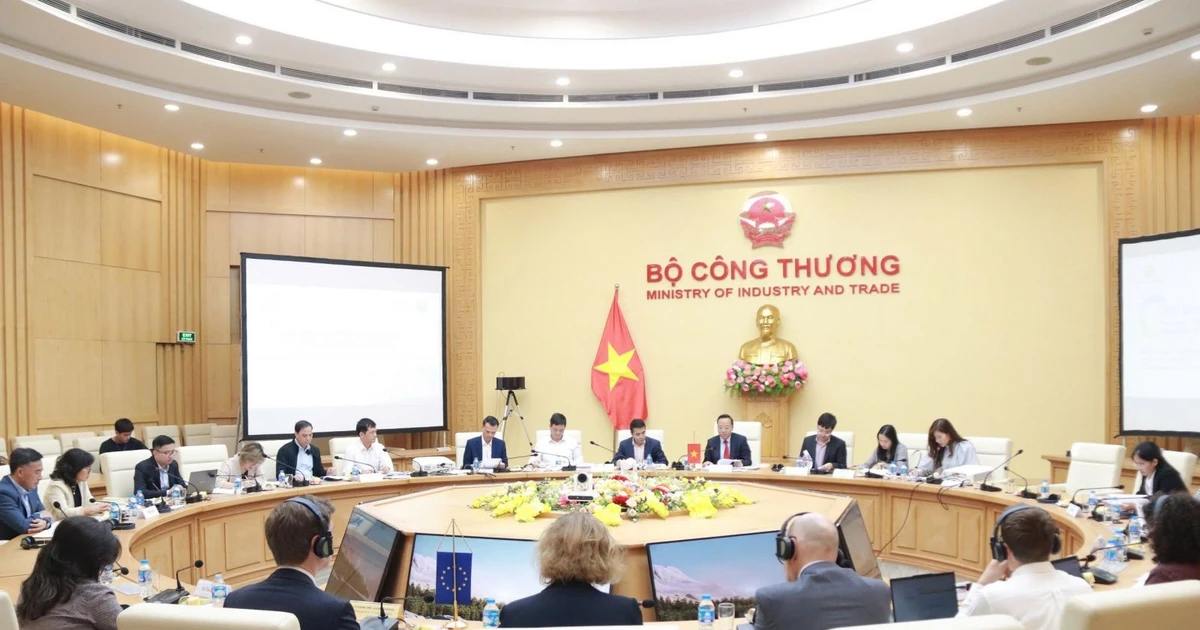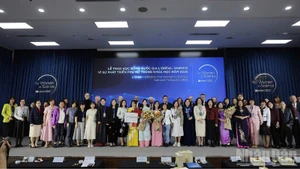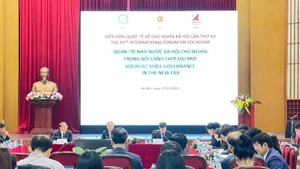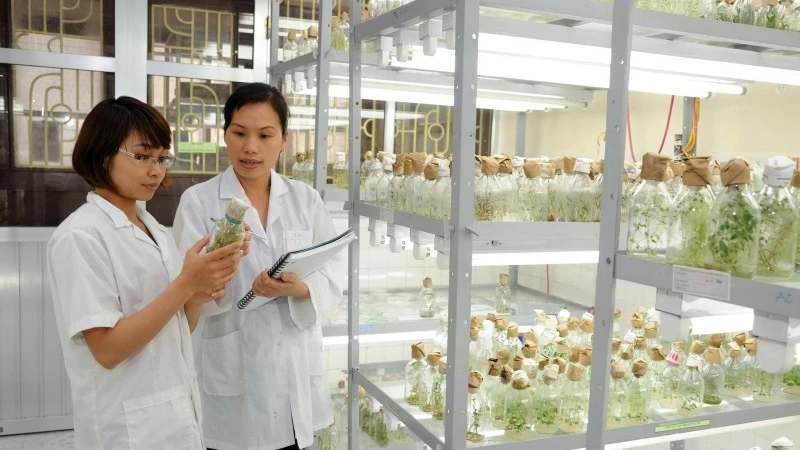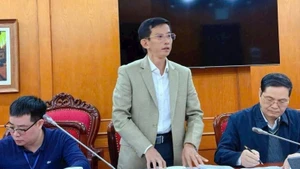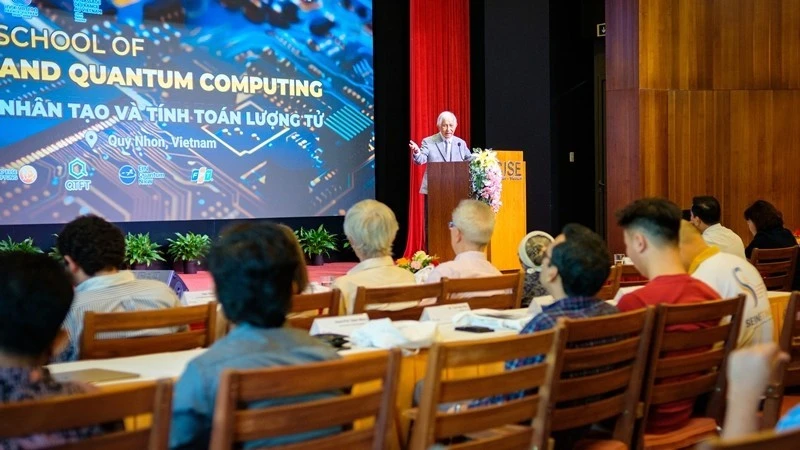Professor Dr Pham Ngoc Ho, former Director of the Centre for Environmental Monitoring and Modelling Research at the University of Science, Viet Nam National University, Ha Noi, recalls the hardship of conducting scientific research: “In the past, we were constantly juggling expenses, as funding was always insufficient. There were times when we had to use our own money to complete the work.”
A paradox of surplus and shortage
According to the Ministry of Finance, in the 2021–2025 period, the State budget for science, technology, innovation and national digital transformation was allocated from many different sources. However, overall spending on these sectors remained modest. Specifically, science and technology accounted for just 1.37% of the national budget in 2021, 1.72% in 2022, 1.39% in 2023, and 1.97% in 2024.
Although funding remains limited, the fact shows that many research institutions have been unable to utilise their entire budgets, with some having to return unspent funds. This is largely due to the complex administrative procedures surrounding disbursement, which create significant obstacles for researchers.
Professor Dr Vu Thi Thu Ha, Director of the National Key Laboratory for Petrochemical Refining Technology under the Ministry of Industry and Trade, noted that researchers can spend up to three years preparing proposals for a single research topic. Yet even after securing approval, they must spend additional time navigating burdensome administrative processes to access funding.
“Scientists are trapped within an inflexible framework, with constraints from input to output, making research heavy and rigid,” she commented.
Sharing this view, Associate Professor Dr Nguyen Viet Dung, Vice-Rector of the School of Mechanical Engineering, Hanoi University of Science and Technology, said scientific research inherently carries risk. However, focusing too much on risk prevention, considering it a loss of public assets, makes scientists hesitate.
“Most scientists choose the safest path: refining existing results instead of pursuing new breakthroughs. This is why so many research topics end up shelved,” he explained.
Earlier, General Secretary To Lam also highlighted a worrying reality: scientists must spend up to 50% of their time and energy on administrative procedures alone. While total national spending on research and development is still under 0.7% of GDP – compared to 2% on average in developed countries and up to 5% in some – the General Secretary stressed that science and technology are the “golden key” to national prosperity and urged that at least 3% of the national budget be allocated to this sector.
The Government quickly responded with Directive 18, which sets clear responsibilities for ministries, sectors and localities. Accordingly, the State budget will be prioritised for strategic technologies, ensuring that no less than 3% of the national budget goes to science and technology. Notably, this proportion is to be raised to 2% of GDP within five years. If feasible and efficiently managed, the Government has pledged that spending could even rise to 5% of GDP.
This is a golden opportunity to restore confidence among scientists and businesses. Once implemented, the policy could be a decisive step towards transforming Viet Nam into a science and technology powerhouse.
Towards a transparent mechanism
While the initiative to increase funding has been widely welcomed, many experts emphasise that the key lies not in the amount allocated, but in the transparency and efficiency of how each dong is spent.
Associate Professor Dr Nguyen Viet Dung argues that a change in mindset is essential, particularly in accepting risk in research. Policies should focus on demand-based funding, linked to specific products and outcomes, rather than uniform allocations.
“Even if the budget increases, it must be allocated to the right stakeholders and support strategic tasks and technologies. Scientists are not accountants or financial experts – they need to focus on innovation. The Government should evaluate results, not just procedures, though proper oversight is still needed,” he said.
Offering another perspective, Dr Nguyen Dinh Cung noted that businesses are now the core of research and development. Therefore, the 3% national budget should be treated as seed capital to leverage further resources from the private sector.
“When businesses have demand, they will conduct research themselves or commission it from research organisations, including State institutions. This demand will promote the supply of technology, creating a market-based research and development mechanism, closely connecting scientists, businesses and the State,” Cung explained.
Cung emphasised that Viet Nam cannot rely solely on public funding. Instead, it must mobilise resources from across society to support innovation. The State should focus its investment on strategic fields, while enterprises should be strongly incentivised to participate in sectors where market demand is high.
According to Finance Minister Nguyen Van Thang, current budget allocations for science and technology are governed by various laws, including the Law on Science and Technology, the State Budget Law, and the Law on Public Investment. However, inconsistencies among these laws have complicated the allocation and settlement of research funding.
To resolve this, the Ministry of Finance has been working with the Ministry of Science and Technology to advise the Government and National Assembly on issuing Resolution No. 193/2025/QH15, which establishes special mechanisms and policies to promote science, technology, innovation, and national digital transformation.
The two ministries are also collaborating to issue a decree aimed at resolving key bottlenecks related to budget allocation, disbursement, and settlement. Once issued, this decree is expected to address many of the challenges currently hampering science and technology expenditure.
Minister Thang also revealed that the Ministry of Finance is reviewing and proposing amendments to relevant laws, with a draft expected to be submitted to the National Assembly at its next session. The ministry will also propose amendments to the State Budget Law, including specific adjustments to science and technology funding in May 2025.


